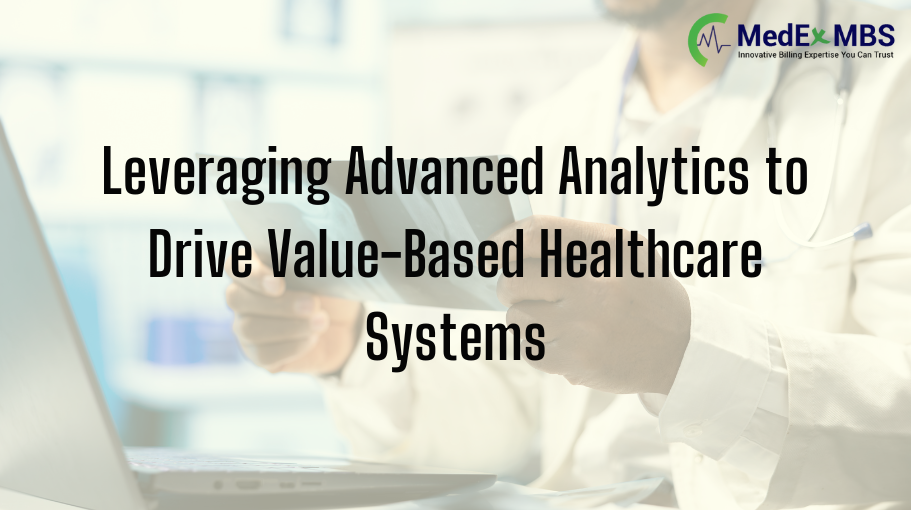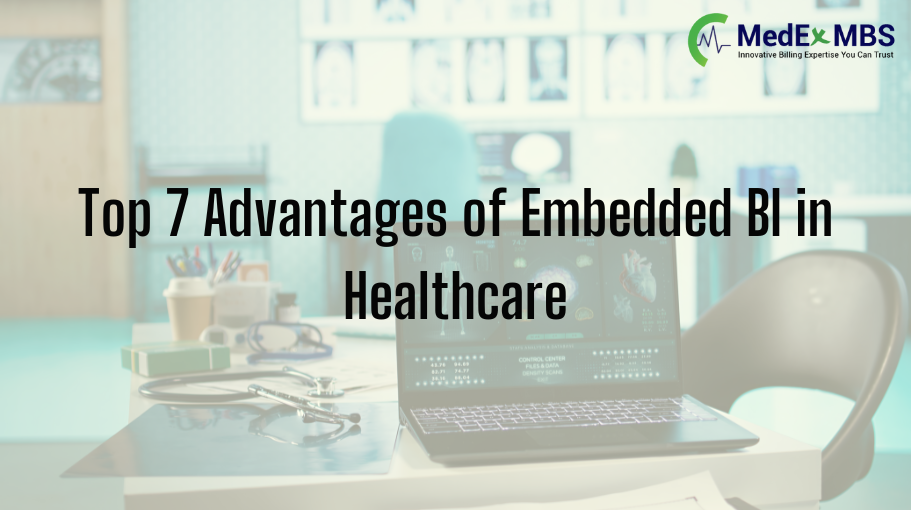Frequent HCPCS Coding Errors in Radiology Billing and Strategies to Prevent Them

Radiology practices frequently neglect to apply separate charges for essential items, including imaging supplies, contrast dye, and radioactive tracers, as their attention is primarily directed towards the main scans and diagnoses. When personnel fail to bill for these expensive materials, practices experience revenue loss and face the risk of compliance violations. A single mistake in billing for a radioactive tracer can result in costs exceeding $1,000 per study. With Medicare reimbursement rates projected to decrease by approximately 2.9% in 2025, these HCPCS challenges are increasingly significant for radiology professionals. This guide outlines prevalent HCPCS challenges and effective strategies to address them. Why is HCPCS Essential in Radiology Billing? CPT codes document the procedures performed, such as MRI scans, CT studies, or PET scans. In contrast, HCPCS codes account for the materials utilized, such as the $2,000 PET tracer, the $300 gadolinium injection, or specialized catheters. Failing to include these supply codes results in the expensive materials being treated as practice overhead rather than being compensated for. This issue is a common occurrence in radiology. Practices tend to concentrate on the high-cost imaging procedures while disregarding the costly materials that enable those procedures to be performed. The most frequent areas where practices incur revenue losses include: Contrast Agents Each type of contrast requires specific HCPCS codes that depend on its composition and delivery method. Gadolinium-based MRI contrast necessitates different codes compared to iodinated CT contrast. Utilizing generic codes instead of the specific agent codes leads to systematic underpayments. Radiopharmaceuticals PET imaging depends on costly tracers that come with intricate billing regulations. Some codes charge per study dose, irrespective of the millicuries used, while others charge per millicurie administered. This differentiation influences whether you bill for one unit or fifteen units for the same injection. Interventional Supplies Catheters, guidewires, and specialized devices employed during interventional procedures are often eligible for separate billing. Omitting these charges can convert profitable procedures into scenarios where the practice breaks even or incurs losses. Frequent HCPCS Coding Errors in Radiology Billing The following outlines the most common HCPCS errors encountered in radiology billing, along with their respective solutions. Incorrect Units for Radiopharmaceutical Billing Radiopharmaceutical codes adhere to distinct billing regulations that many practices misinterpret, resulting in considerable revenue loss. The Issue Certain codes bill “per study dose, while others bill “per millicurie. Code A9503 encompasses up to 30 millicuries but bills as a single unit, irrespective of the actual quantity utilized. Numerous practices mistakenly bill 15 units when administering 15 millicuries. The Resolution Educate staff to distinguish between “per study dose” and “per millicurie” descriptors. Develop quick reference cards that outline unit rules for frequently used radiopharmaceuticals. Insufficient Documentation for High-Cost Tracers Unlisted tracer codes necessitate comprehensive documentation that many practices neglect, leading to claim denials. The Issue Codes such as A9598 require documentation of the product name, NDC number, dosage, and invoice cost. The absence of any of these elements results in denials. Random audits demand invoice verification, and incomplete records necessitate the repayment of received funds. The Resolution Establish documentation templates for unlisted codes. Mandate the inclusion of invoice copies and complete product information before billing any NOC radiopharmaceutical codes. Billing for Contrast When It Is Already Included Payer bundling regulations differ significantly, confusing regarding when contrast can be billed separately. The Issue Certain payers bundle MRI contrast into procedure payments. Billing it separately breaches contracts and initiates compliance reviews. Each payer has varying bundling rules that are subject to change quarterly. The Resolution Keep up-to-date bundling reference guides for major payers. Review payer updates every quarter and modify billing protocols accordingly for each contract. Insufficient Contrast Documentation Details Inadequate contrast documentation hinders accurate HCPCS coding and leads to systematic revenue loss. The Issue The type and quantity of contrast must be recorded in the technique section prior to the addition of supply codes. Incomplete information regarding specific contrast agents, volumes given, or methods of delivery hinders precise HCPCS code selection and reimbursement. The Resolution Mandate that technologists record the precise type of contrast, volume, and method of administration. Develop standardized templates for documenting contrast in imaging reports. Prior Authorization Shortcomings for High-Cost Agents High-priced radiopharmaceuticals and contrast agents frequently necessitate prior authorization, which practices often neglect to secure. The Issue Advanced PET tracers, which cost between $3,000 and $5,000, require pre-approval before administration. The absence of authorization results in automatic denials, irrespective of medical necessity. Emergency studies exacerbate this issue when time constraints prevent authorization requests. The Resolution Establish pre-authorization tracking systems for high-cost agents. Confirm coverage before scheduling and maintain databases for authorizations with tracking for expiration. Billing System Mapping Mistakes Chargemaster systems frequently misclassify procedures under incorrect HCPCS codes, leading to systematic billing inaccuracies. The Issue Technical personnel document bilateral imaging on charge tickets, yet billing systems assign unilateral procedure codes. Therapeutic infusions are incorrectly categorized under hydration codes. These mapping inaccuracies result in consistent underbilling across numerous claims. The Resolution Perform quarterly audits of the chargemaster with both clinical and billing personnel. Cross-verify charge ticket descriptions against the actual HCPCS codes in your billing system. When discrepancies are identified, promptly update mappings and utilize test claims to validate corrections before implementation. Volume Calculation Errors Inaccurate dosage calculations result in incorrect unit billing and substantial revenue discrepancies. The Issue Per-milliliter codes necessitate accurate volume calculations. Billing practices that charge per vial rather than the actual milliliters administered overlook potential revenue. Additionally, the requirements for waste documentation further complicate the precise determination of units for costly agents. The Resolution Educate staff on the differences between per-unit and per-volume billing. Establish protocols for verifying dose calculations. Ensure proper documentation of waste for high-cost radiopharmaceuticals. Incomplete Invoice Records for Audits The absence of invoice documentation poses a risk during payer audits and
Top 7 Advantages of Embedded BI in Healthcare

The healthcare sector is a field characterized by continuous changes driven by new technologies and methodologies aimed at enhancing patient care and optimizing administrative processes. A notable advancement in this area is healthcare business intelligence, which incorporates integrated analytic tools for data analysis. Healthcare BI significantly enhances the efficiency and effectiveness of healthcare services and systems in an automated manner. Embedded Business Intelligence includes comprehensive data gathering, analysis, storage, processing, along with visualization, predictive analytics, and performance management facilitated by sophisticated reporting. Furthermore, BI is crucial for healthcare providers, enabling them to make informed clinical decisions that lead to improved patient outcomes, address financial challenges, and manage operations effectively. In this blog, we will examine seven key benefits of embedded BI in healthcare and how these elements work together to foster a seamless and efficient healthcare experience. 7- Key Benefits of Healthcare Business Intelligence 1. Improved Patient Care and Outcomes: One of the most significant applications of business intelligence for healthcare providers is the enhancement of patient care and outcomes. The incorporation of embedded business intelligence in the healthcare sector enables users to obtain real-time data and analytics seamlessly integrated into their workflow. This immediacy empowers physicians, doctors, and other medical professionals to gain insights into a patient’s medical history, diagnoses, and laboratory reports. By embedding analytics directly into patient management systems, healthcare providers can identify patient risks and take proactive measures to mitigate them without the need to switch between different systems. For instance, predictive analytics driven by embedded BI can pinpoint patients at risk of developing specific conditions or complications, facilitating timely interventions. Early detection of chronic diseases such as diabetes or heart conditions can result in improved long-term outcomes for patients. Tip: The Self-Service BI tool is also accessible to patients, granting them prompt access to their personal information. 2. Enhanced Operational Efficiency: Healthcare organizations are intricate, comprising numerous departments and systems collaborating to deliver patient care. Integrated BI tools can significantly improve operational efficiency by offering insights into hospital workflows, resource utilization, and overall staff performance. Healthcare professionals can leverage data-driven insights to optimize staff schedules, minimize patient wait times, and ensure that medical equipment and supplies are adequately stocked in advance. Moreover, business intelligence software tools assist in pinpointing areas where resources may be underutilized, enabling healthcare administrators to allocate resources more effectively. This results in smoother administrative operations and ultimately enhances the overall patient experience. 3. Real-Time Insights for Prompt Decisions: One of the most notable benefits of embedded BI is its capacity to provide real-time data and analytics access at any time and from any location. In the healthcare sector, decision-makers require up-to-the-minute information to make critical decisions. Embedded BI integrates effortlessly with Electronic Health Records (EHR) and other clinical systems, providing healthcare providers with immediate access to patient data and actionable insights. Real-time access empowers healthcare professionals to make quicker, more informed decisions, whether in an emergency situation or during routine patient care. For instance, having access to a real-time view of a patient’s vital signs can assist healthcare workers in identifying potential issues before they escalate, thereby improving response times and patient outcomes. 4. Cost Reduction and Revenue Management: Healthcare providers face ongoing challenges in managing costs while ensuring high-quality patient care. Embedded BI is crucial in assisting healthcare organizations in lowering operational expenses by offering insights into financial data. By pinpointing inefficiencies, waste, or excessive resource utilization, healthcare administrators can make well-informed decisions to enhance spending efficiency. For example, BI can scrutinize patient billing data to verify accuracy and identify potential revenue losses stemming from coding mistakes or overlooked charges. Additionally, predictive analytics aids healthcare organizations in anticipating expenses and budgeting more effectively, ensuring that resources are allocated to areas of greatest need without incurring unnecessary costs. 5. Internal Collaboration and Communication: Effective teamwork and communication within healthcare teams are essential for delivering high-quality care. Integrated Business Intelligence (BI) promotes seamless data exchange and collaboration by providing a unified perspective of patient data, thereby enhancing communication across different departments and specialists. Healthcare professionals from different departments, including doctors, nurses, administrators, and lab technicians, can access the same data, minimizing misunderstandings and enhancing teamwork. This method of data sharing fosters improved decision-making, coordinated care, and quicker resolutions to patient concerns. 6. Automated Regulatory Compliance and Reporting: The healthcare sector is governed by numerous regulations and standards, such as HIPAA and CMS, which mandate that healthcare providers uphold stringent data privacy and security measures. Embedded Business Intelligence (BI) supports organizations in maintaining compliance with these regulations by automating the processes of data collection and reporting, while also ensuring that the system is updated in accordance with any future modifications. Through the implementation of embedded BI, healthcare providers are able to produce precise, real-time reports for audits and regulatory submissions. By centralizing and automating data management processes, healthcare organizations minimize the likelihood of errors and guarantee adherence to compliance standards. Furthermore, BI tools enhance the tracking and management of patient consent forms, medical records, and other compliance-related responsibilities, thereby simplifying the task for healthcare providers to remain compliant with legal obligations and avoid incurring costly penalties. 7. Enhanced Research and Disease Prediction: Embedded BI represents a significant advancement in the realm of predictive analytics within healthcare. Utilizing sophisticated algorithms, embedded BI tools can scrutinize extensive datasets to predict patient outcomes, recognize trends, and issue early alerts regarding potential health concerns. For instance, hospitals can employ predictive models to foresee patient readmissions, allowing healthcare providers to implement preventive measures such as follow-up care, early interventions, or tailored treatment plans. Additionally, predictive analytics can contribute to more effective management of chronic conditions, leading to a decrease in hospitalizations and an enhancement in long-term patient outcomes. Final Thoughts Embedded BI is revolutionizing healthcare by providing data-driven insights that enhance patient care, streamline operations, and improve financial management. From immediate access to patient data to predictive
